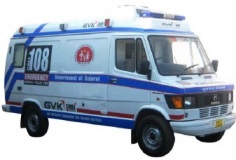Nov.17: HEALTH MATTERS
Don’t make these common first aid mistakes
Applying butter to a burn:Â Â The layer of grease could cause an infection. Also, don’t cover a burn with a towel or blanket, because loose fibres might stick to the skin. When dealing with a serious burn, be careful not to break any blisters or pull off clothing stuck to the skin. Never pop a blister. You could damage the skin and cause an infection.
Tilting the head back during a nosebleed: This can cause the blood to drain into the back of the throat, which can make the person gag or cough, potentially obstructing breathing. After the bleeding has stopped, ensure the person does not blow the nose or bend over.
Using a tight bandage on a bleeding limb: Avoid this practice except as a last resort. Arresting bleeding by forcibly compressing a blood vessel can stop blood flow to an entire foot, leg, hand or arm, causing permanent damage.
Cooling a fever with an alcohol rubdown: As alcohol evaporates, the skin feels cooler. But internal body temperature doesn’t necessarily drop. An alcohol rub may be harmful, especially for children, because alcohol is absorbed by skin and is toxic to the nervous system.
Putting something in the mouth during a seizure: This may result in injuries, such as chipped teeth or a fractured jaw.
Inducing vomiting when poison has been ingested: Vomit or poison could go down the wrong way and enter the lungs, resulting in lung injury. It could also cause more poison to be absorbed into the body.
Using soap, iodine or hydrogen peroxide to clean a cut or scrape: Using these chemicals may irritate the wound. Also, don’t put a bandage unless the location of the wound is such that it will get dirty. Exposing a cut or scrape to fresh air is the quickest way for the injury to heal.
Applying heat on a sprain or fracture: Heat boosts blood flow, which can make the swelling worse.
Not seeing a doctor after an electric shock: Don’t fail to get medical attention for an electric shock even if damage is not evident. It can cause invisible (and serious) injury deep inside the body.
Not taking head trauma seriously enough: Don’t assume that because the injured person didn’t lose consciousness, he or she is fine. There are other signs of concussion– headache, confusion, nausea or vomiting, memory loss or sleepiness. Another common mistake is failing to watch carefully for 24 hours or more for symptoms that may develop later.
Missing the signs of internal bleeding: You may think that because someone ‘looks fine’ after a fall or a car accident, or some other trauma, there’s no need to go to the hospital. He or she could be suffering from internal bleeding. Because it’s inside the body or brain, there may be little or no sign that it’s happening.
Removing irritants from the eye: Trying to extract the irritant from the eye can make the injury worse, or cause either an abrasion or permanent damage.
Call for help
Dial the number for medical emergencies and seek urgent help if a person has:
• Chest pain
• Lost consciousness
• Confusion
• Trouble breathing
• A serious allergic reaction
• Bleeding that won’t stop
First aid is about presence of mind and having the necessary supplies handy. But, it is also about the right information. Do not go by outdated information. Also, know when you can treat the injured or unwell person at home and when you need a doctor. It could make the difference between life and death.
Sources: www.rd.com, www.webmd.com, www.safebee.com, www.caring.com, www.newsweek.com






